Islands are awesome but, for many, the tropics aren’t worth the bother. Hot, sweaty, buzzing with tourists and mosquitoes…how are you supposed to relax? If you’re more about spending your hard-earned time off amid misty skies, craggy peaks, serene beaches, delicious food, and amazing animals, here are some destinations that offer all that island beauty with none of the heat rash.


Tropical Islands Suck. Go to These 7 Islands Instead.
1. San Juan Islands, Washington State

Photo: Vikki Hunt/Shutterstock
Located between Washington State and Vancouver Island, British Columbia, the San Juan Islands are a forested archipelago known for pristine waters, mountain views, and wildlife. The cool Pacific Northwest climate keeps these islands comfortable year-round — making them a perfect island escape, no matter the season.
The port city of Friday Harbor on San Juan Island is home to fresh seafood restaurants, shops, and the Whale Museum. The Lime Kiln Point State Park, across the island, is a top spot for sighting orca whales, and the San Juan Islands Sculpture Park has a collection of art from local and world-renowned sculptors.
Nearby Orcas Island hosts the annual Doe Bay Festival, a four-day summer grassroots music event that attracts top-billing artists. Foodies flock to restaurants here like the Hogstone’s Wood Oven, serving up local cuisine from the hands of multiple James Beard-award nominee Jay Blackinton.
Getting there: A state-run car and passenger ferry system delivers visitors to the main islands on a regular schedule from Anacortes, Washington, and the islands are also serviced by seaplane from Seattle.
2. Faroe Islands, Denmark
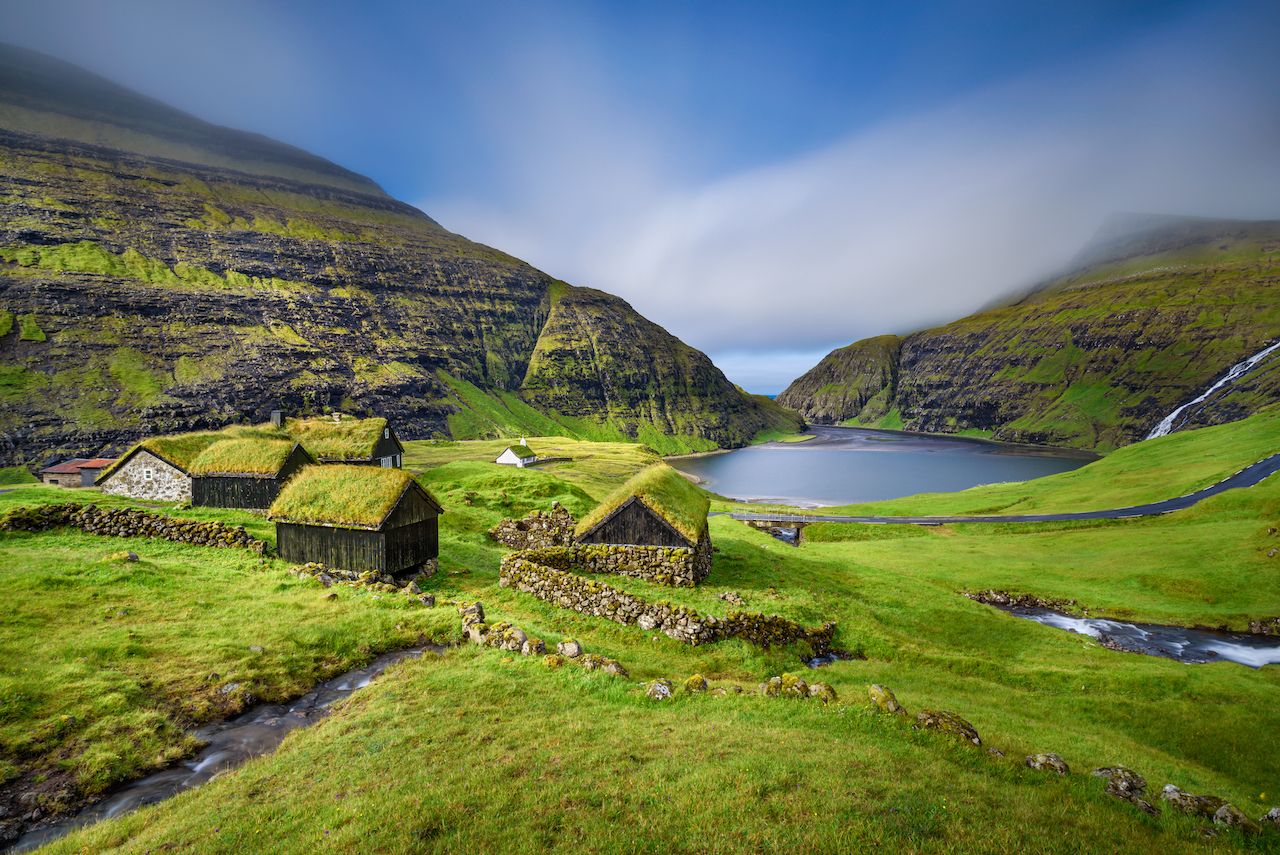
Photo: Nick Fox/Shutterstock
The Faroe Islands are part of Denmark but lie in the North Atlantic between Iceland and Norway. These rocky, volcanic outposts are cloudy and cool throughout the year, averaging 210 rainy or snowy days annually. Hikers and birders come for the islands’ craggy cliffs and sightings such as the Faroese puffins, with their bright plumage and cartoon-like faces. Whale-watchers can also spot orca and long-finned pilot whales.
Live music is a regular part of Island life, and many Faroese play several instruments. You can catch local acts at the islands’ two breweries or at one of the many cafes that line the streets of most towns. Foodies have also been coming to Faroese restaurants of late. Etika creates sushi from fresh Faroese seafood and the 17-course tasting menu at Koks recently earned it a Michelin star, the first such accolade on the islands.
Getting there: Scandinavian Airlines and government-owned Atlantic Airways have flights to the main airport, while Atlantic Airways offers helicopter service to outer islands. By sea, Smyril Line runs boat service from Iceland and Denmark. The 18 islands are connected by roads, ferries, and bridges.
3. Prince Edward Island, Canada
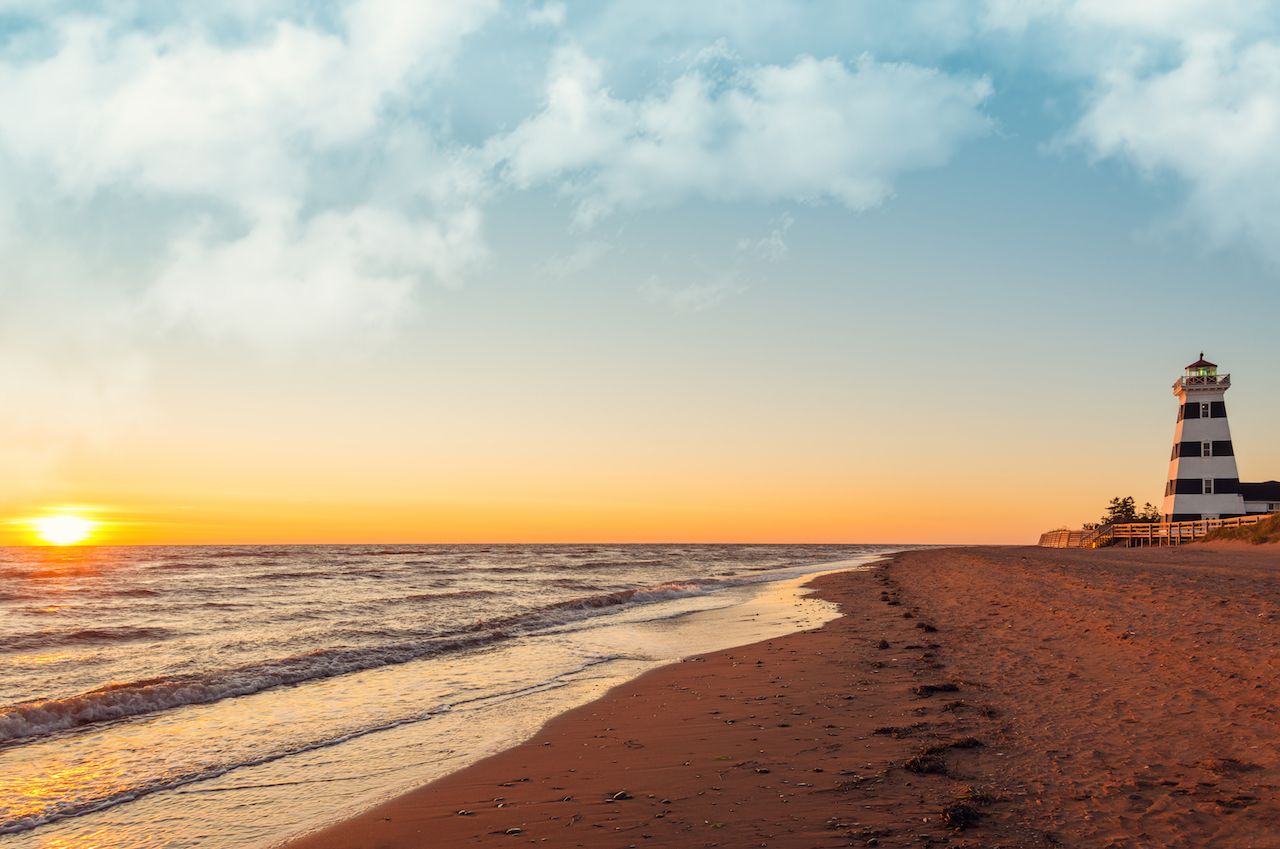
Photo: Vadim.Petrov/Shutterstock
Just north of Nova Scotia, Prince Edward Island was the fictional setting for the novel Anne of Green Gables. The island is ringed by red-sand beaches dotted with lighthouses, while the interior is full of fertile farmland. The warm ocean waters surrounding the island are ideal for clamming, sea kayaking, fishing, and boating. Rolling hills make it easy to get around on bike or foot, and the 270-mile-long Confederation Trail is a popular path for sightseeing.
Farms across the island offer everything from petting zoos to farm stays, where lodgers enjoy life on the farm while lending a bit of muscle. Breweries, wineries, and distilleries are popping up across Prince Edward Island, featuring libations made from locally-produced grapes, hops, fruits, and grains. Called “Canada’s Food Island,” Prince Edward is best known for its mussels and lobster. You can try them, and the island’s much-touted potatoes, at one of the restaurants in the island’s capital Charlottetown, which also has a modern art center, theatres, and shops.
Getting there: You can reach Prince Edward by bridge, or flying into Charlottetown.
4. Kodiak Island, Alaska
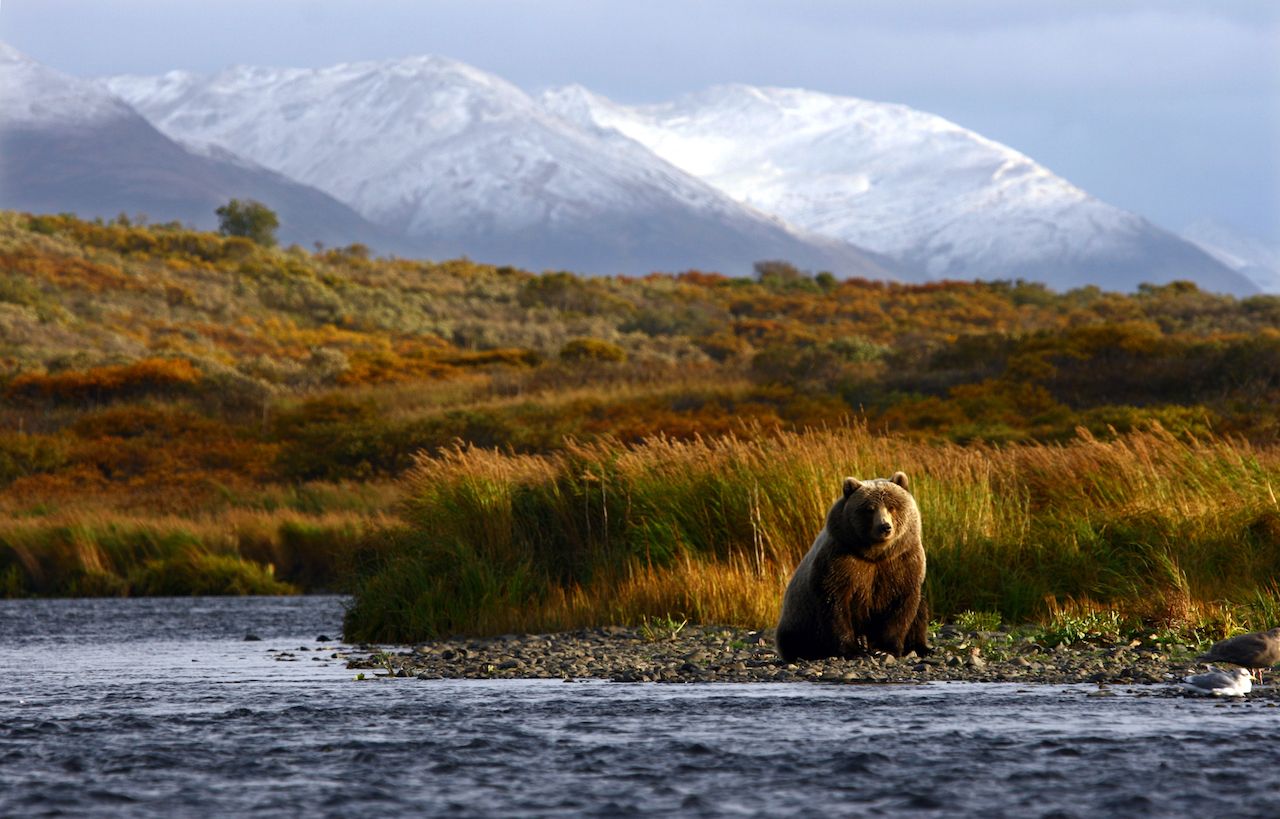
Photo: bobby20/Shutterstock
The Kodiak Island archipelago is a large group of islands about 30 miles from the Alaska Peninsula. Kodiak Island is the largest in the group. Called “The Emerald Isle,” thanks to its carpeting of forest and moss, nearly two-thirds of the island is part of the Kodiak National Wildlife Refuge.
You can hike in lush forests, stalk wildflowers, and check out its abundant wildlife — including the Kodiak brown bear, the largest brown bear in the world. July to September are the best months to see these bears, some of which can stand up on hind legs almost 10 feet tall. Kodiak Island also has some of the best whale-watching in the world. From April to November, you can see grey whales, sei and minke whales, and humpback whales from boats or from viewing spots at Miller Point at Ft. Abercrombie State Park, Surfer Beach, or the cliffs along Chiniak Highway.
Bird watchers come to see the over 240 species that calling Kodiak Island home, including the bald eagles that come during the impressive “winter invasion.” Their size makes a swooping eagle a sight most will never forget.
Getting there: Alaska Airlines flies to Kodiak Island from Anchorage, and the Alaska Marine Service offers ferries to Kodiak from Homer, Alaska.
5. Menorca, Spain
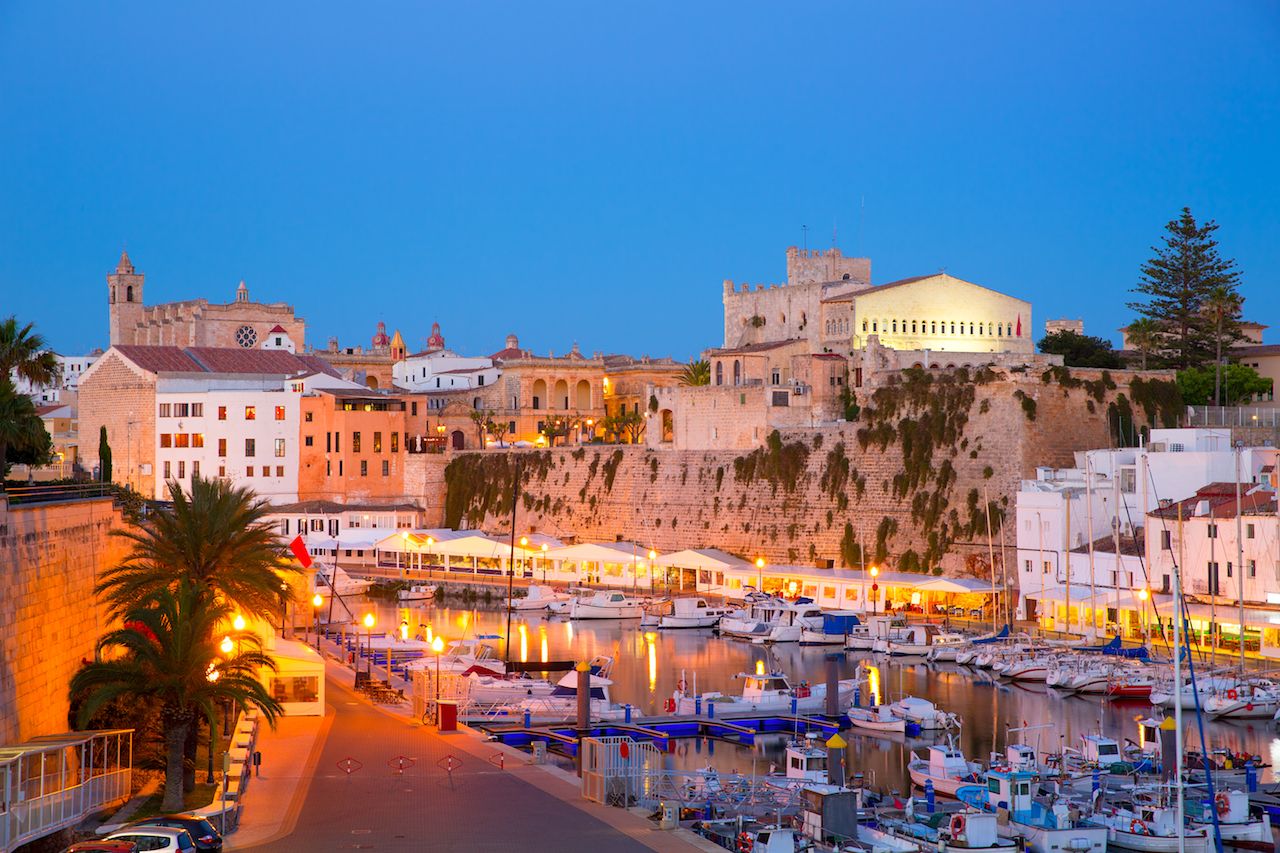
Photo: Tono Balaguer/Shutterstock
Menorca is one of the Balearic islands off the coast of Spain in the Mediterranean, but is more low-key than its neighbors, Mallorca and Ibiza. Menorca is known for its beaches, from miles-long sandy strands to rocky bays. Thanks to a temperate climate, shady pine trees fringe the coast, while the interior areas are full of farmland dotted with forts, castles, and prehistoric monuments.
The capital city of Mahon sits atop a bluff overlooking a large harbor and is surrounded by historic architecture, including Georgian-style mansions and a church dating back to the 13th century. Kayaking, windsurfing, sailing, and scuba diving are popular in summer. While high temperatures reach over 80 degrees in July and August, other months are much cooler, and year-round the dry climate means less rain or humidity than on tropical islands.
The 116-mile Camí de Cavalls is an ancient pathway that encircles the island. It’s popular with hikers and campers, who use it to reach some of Menorca’s most inaccessible and beautiful beaches. The path is broken up into smaller intervals, making walking parts of it an option, if you don’t want to take up your entire vacation with a long-distance haul.
Getting there: A short flight from Barcelona or Valencia will get you there.
6. Hebrides, Scotland
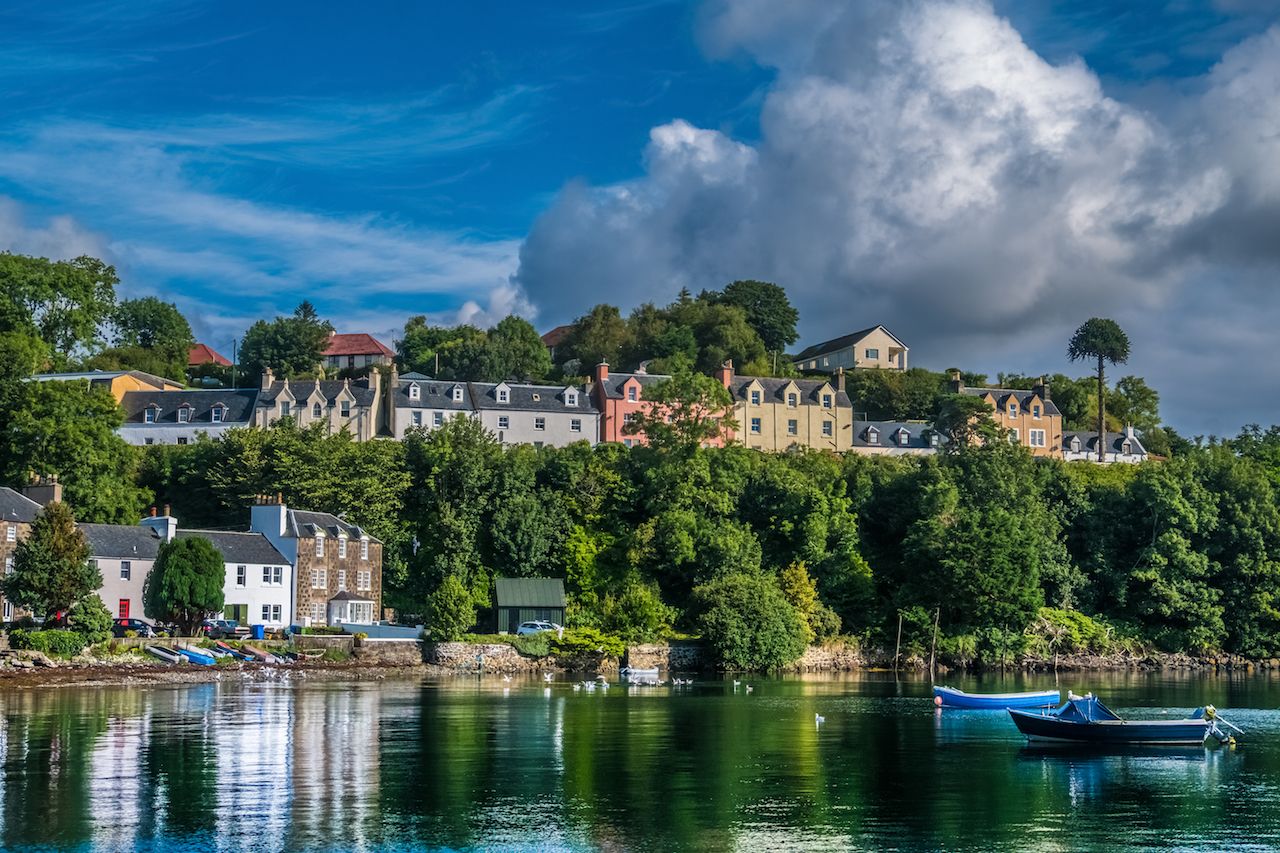
Photo: LouieLea/Shutterstock
Emerald waters, ancient stones, and aged whiskey are among the highlights of these 50 islands along the west coast of Scotland. Walk along sandy beaches, admire fields of wildflowers, or climb the jagged Cuillin Hills on the Isle of Skye. On the Isle of Lewis, you can visit prehistoric sites, like the 5,000-year-old Callanish Standing Stones.
The Hebrides are a haven for marine mammals and seabirds. The northwest isles are ideal for watching otters, while you might glimpse whales, dolphins, and porpoises from the Isle of Mull. Throughout the islands, seals haul themselves from the water for a rest. Birdwatchers can spend long days observing golden eagles, puffins, and gannets.
Food and drink figure prominently into many visitors’ Hebrides itineraries. Lobster, crab, and shellfish are plucked straight from the sea and free-range meats, fattened on the island’s plentiful heather, are on most menus. The Isle of Skye has two Michelin-star restaurants that feature other local specialties such as gin-cured salmon and halibut roasted in Douglas fir. Whiskey, Scottish Gaelic for “water of life”, flows freely throughout the islands. The eight distilleries on the Isle of Islay are known for their smokey, peat-infused malts.
Getting there: The central Isle of Skye is connected to the mainland by a bridge, with other islands accessible by bridges, ferries, and tour boats. Bus service gets you around the islands and touring by bike is a common pastime. Every island has somewhere to rent a bike, which can also be taken on buses and ferries.
7. Åland Islands, Finland
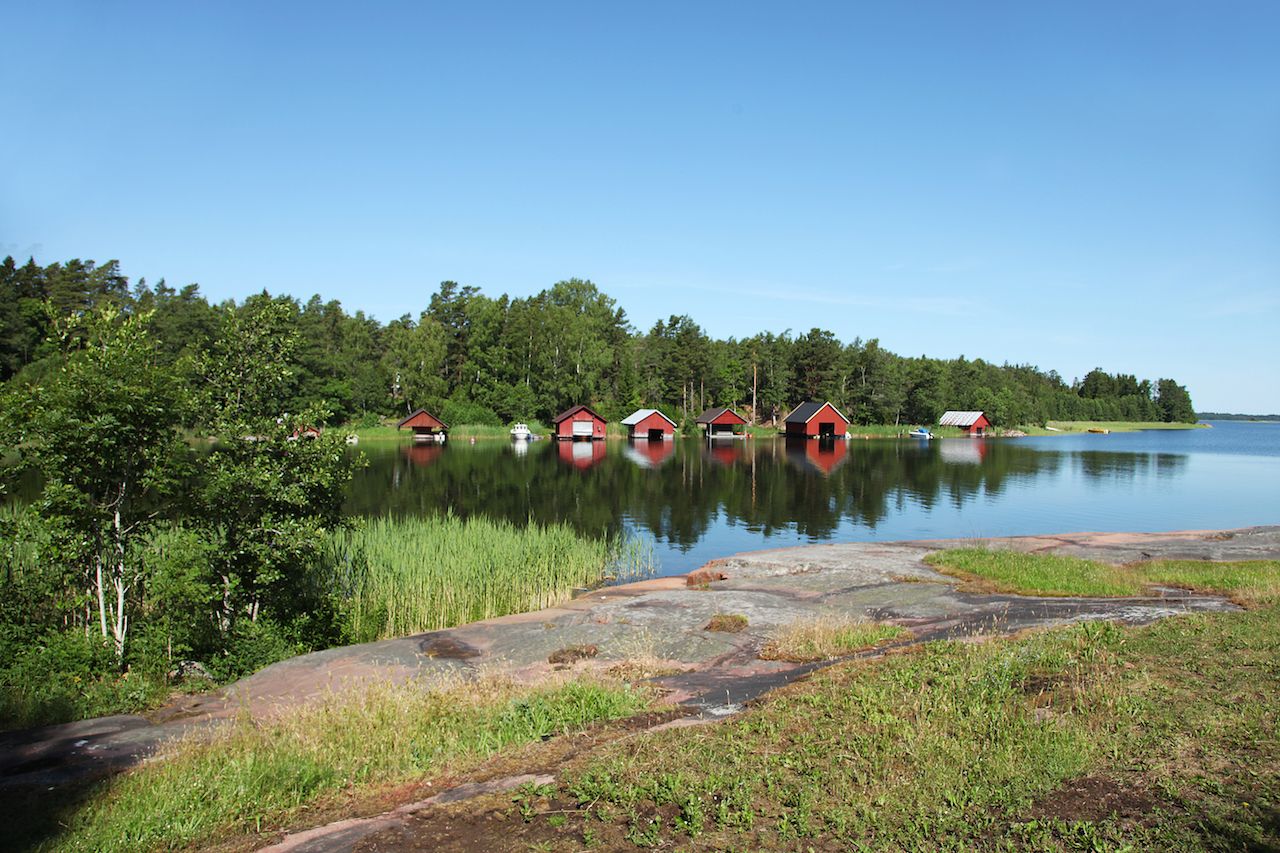
Photo: Yuriy Shmidt/Shutterstock
The autonomous Finnish province of Åland is located in the Baltic Sea, between mainland Finland and Sweden. The archipelago has over 6,500 islands, but only around 60 are inhabited — giving the area a quiet, relaxed feel even in the summer tourist season.
The official language here is Swedish, while many of the intricately detailed wooden houses — in pastel hues of yellow, blue, and lilac — were built in the 19th century by Russians who once controlled the area. The capital (and only) city, Mariehamm, is named for the Russian Empress Maria Alexandrovna, and its cobbled streets fill with visitors in summer. Mariehamm’s cafes serve local specialties like Åland pancakes, warm slabs of semolina, with milk, sugar, and cardamom, and lohikeitto, a hearty dill, salmon, and potato soup.
The white nights of northern European summers make these islands a prime spot for those who want to pack as much into a visit as possible. Cycling, golf, kayaking, sailing, and fishing are favorite activities — but a highlight is taking a classic Finnish sauna and cooling off with a dip in the chilly Baltic Sea. Mariehamm even has a public steam room, swimming pool, and sauna. Many visitors begin their visit in Mariehamm and then move to a rented cabin on a smaller island to enjoy the beauty and solitude all Åland has to offer.
Getting there: Midway between Stockholm and Helsinki, the islands are easily reached by boat or ferry from many locations or even a Finnair plane from Helsinki or Turku. Thanks to many options of ferries and bridges, it is easy to hop from island to island.